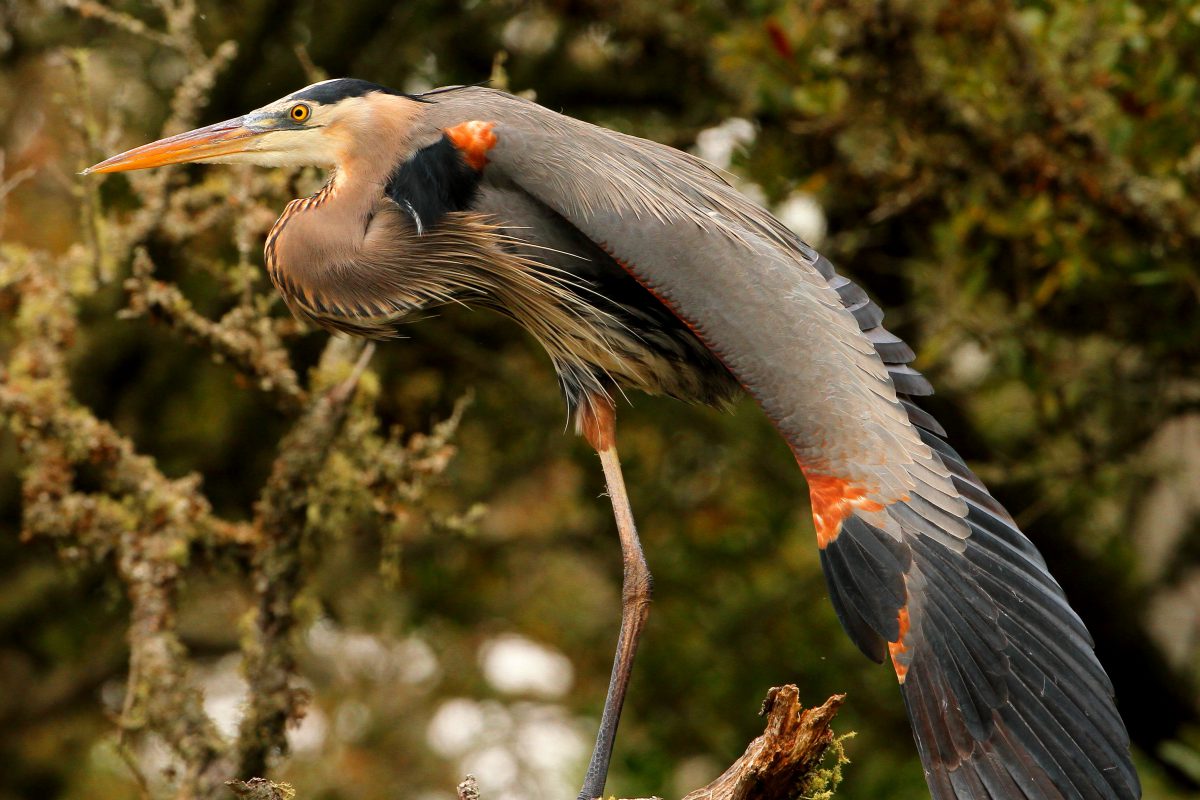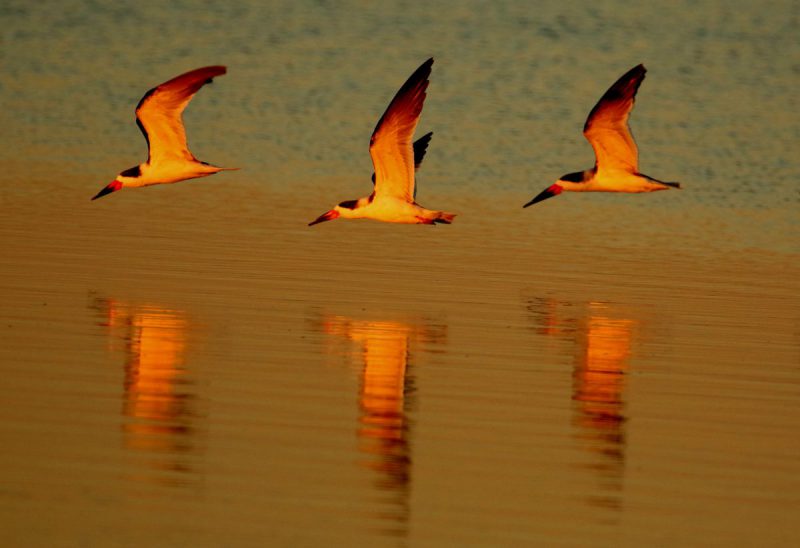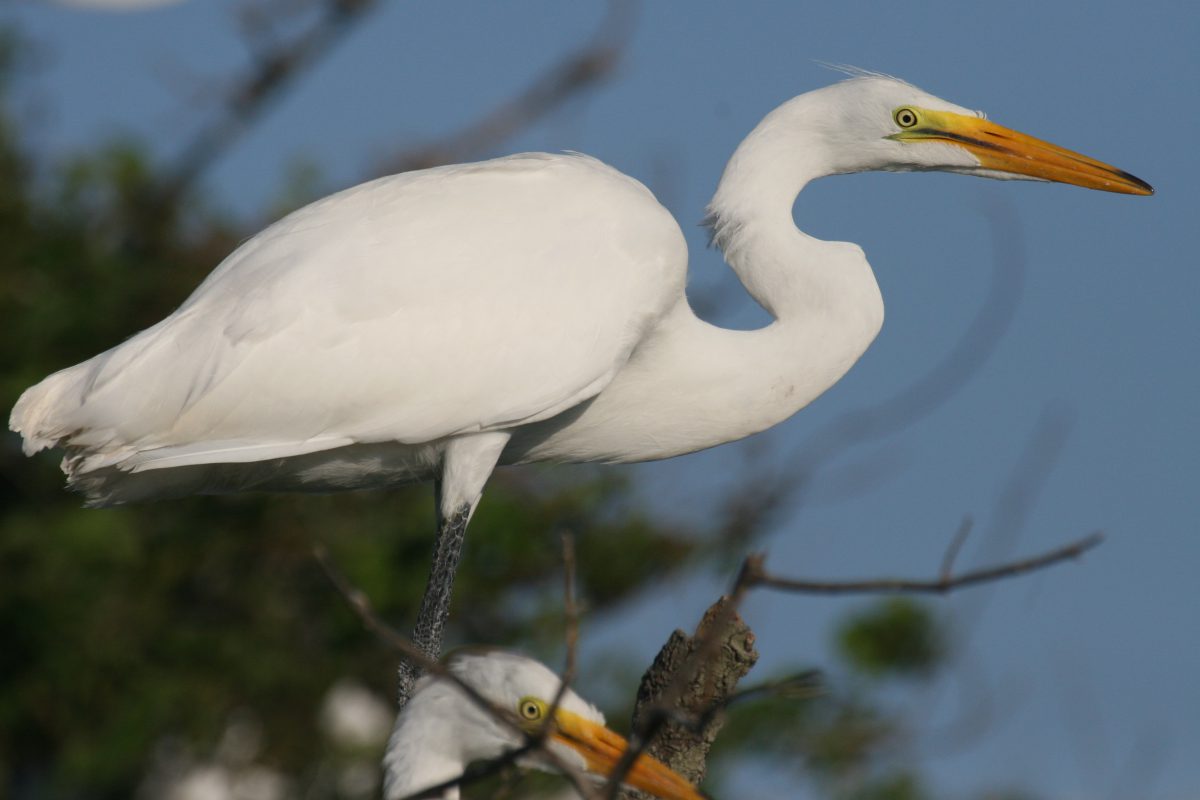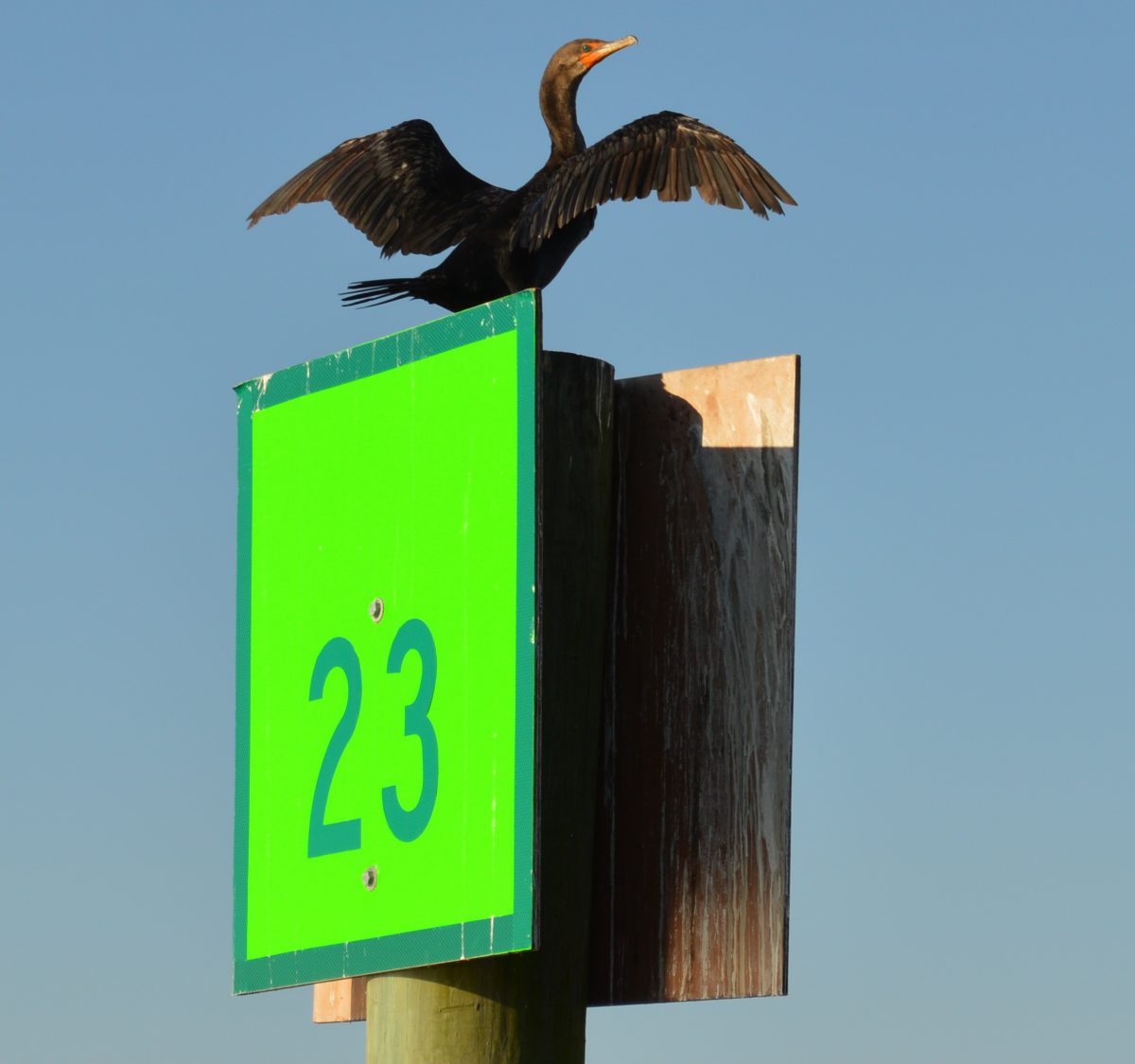The air is crisp, the leaves are changing and the sky and waters are teeming with birds and waterfowl. Fall on the coast is a great time for bird watching, and there’s always that slim chance of spotting a bird not usually seen around the Crystal Coast, like a white pelican.
Local birding expert JoAnne Powell just wrapped up her three fall birding cruises on the White Oak River for the North Carolina Coastal Federation. And while she didn’t spot any white pelicans on this year’s cruises, attendees did get to see many resident and migratory birds.

Great blue herons are the largest type of heron in North America. They are highly adaptable and seen throughout the continental United States. Photo by Sam Bland.
Powell, who is a board member of the federation and the chair of the central coast advisory board, said she became a serious bird watcher more than 40 years ago. For 30 years, she served as curator of education for the North Carolina Maritime Museum, where leading bird watching tours was one of her programs.
Powell retired from the museum in 2009, but she has continued to lead birding tours for the museum, as well as for Core Sound Museum, the Rachel Carson Reserve and Road Scholar. She started leading tours for the federation in 2014 upon the recommendation of staff members Sam Bland and Rachel Bisesi.
The federation’s fall birding cruises ended on Nov. 13, but there are more to come in the spring. Powell said the Sunday morning tours have been popular during both seasons.
“Most people are thrilled with the close-up views of birds we commonly see from a distance,” she said. “Photographers get great photos, bird watchers see a variety of coastal birds, and others just enjoy the Sunday morning boat ride.”
While there weren’t any rare sightings this fall, Powell said they did see a wide variety of birds.
“This fall we had wonderful and spectacular close-up views of great egrets, eagles and black skimmers, besides the regulars such as great blue herons, cormorants, kingfishers, a variety of sandpipers and gulls,” she said.
Powell said the “best fall bird” is the black skimmer and that during the tours this year, attendees were treated to exciting views of the resident and migrating eagles.
Ed Phillips, who attended the Nov. 13 birding cruise, said the trip was great for anyone, not just birders.
“JoAnne and the boat operator were extremely pleasant, knowledgeable and fun,” Phillips said. “A wonderful experience for both novice and advanced birders or anyone looking for an opportunity to see the coastal environment.”
Black skimmers in action:
Check out more photos of the types of birds seen during the cruises:

Kingfishers are known for their wild rattling calls. They feed on fish by plunging headfirst into the water. Photo by Sam Bland.

Black skimmers find their food through touch, not site. They are known for skimming the water at the surface and usually feed in the late evenings. Photo by Sam Bland.

Great egrets are seen on the North Carolina coast throughout the year. They catch fish in shallow waters but also eat crustaceans, frogs and salamanders. Photo by Sam Bland.

Cormorants are generally seen in North Carolina in the fall and winter. Their diet varies depending on where they are. Photo by Sam Bland.
